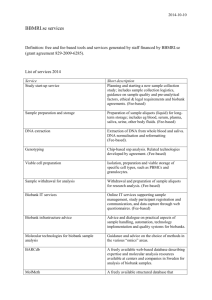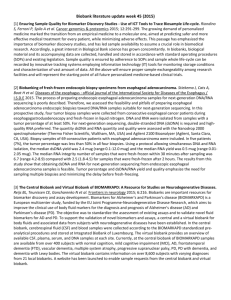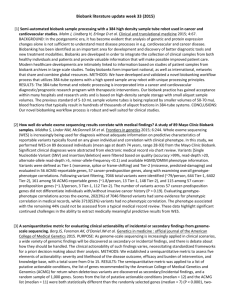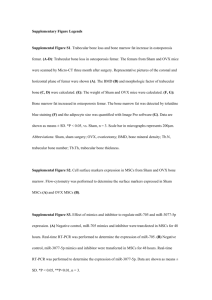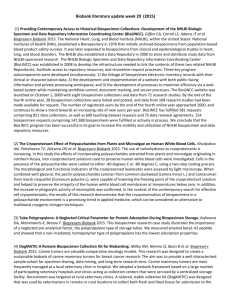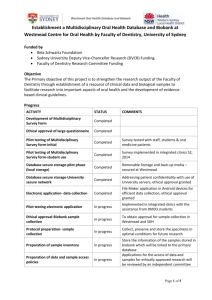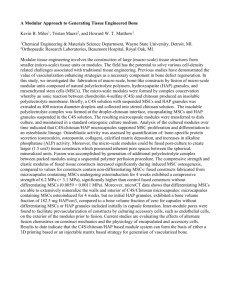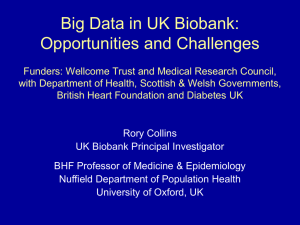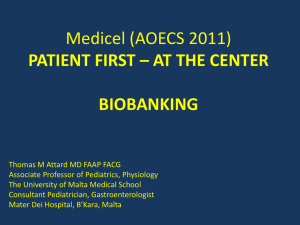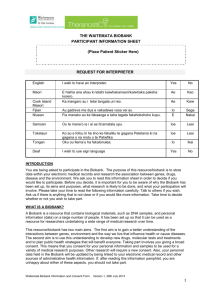Week 34 (2015-08-22)
advertisement
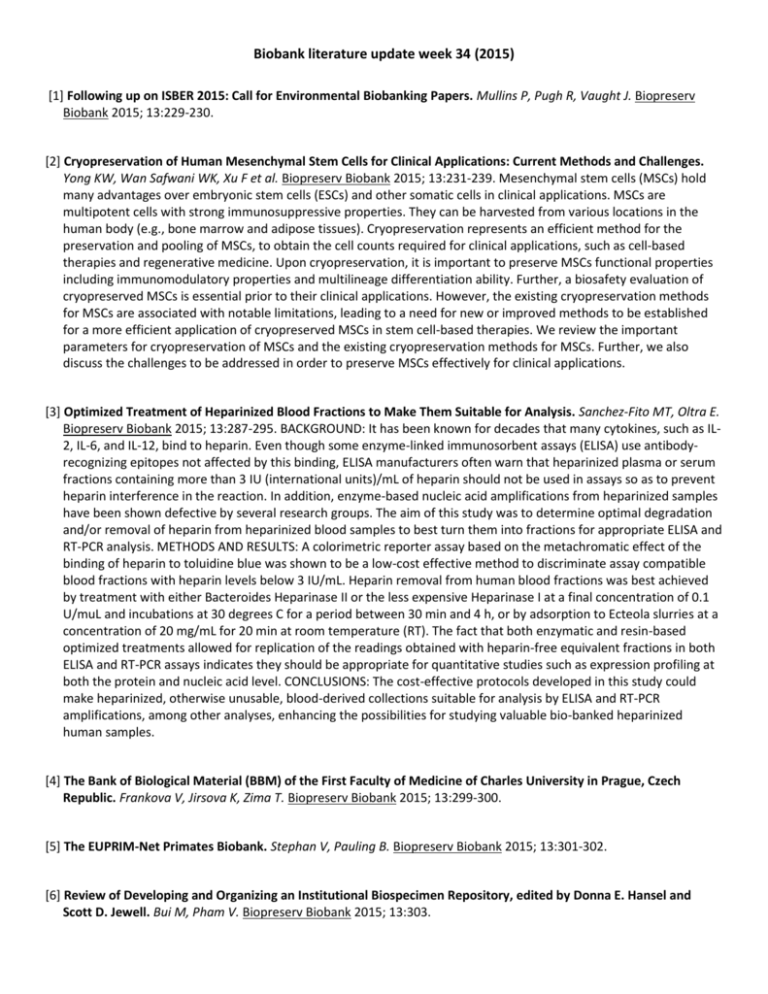
Biobank literature update week 34 (2015) [1] Following up on ISBER 2015: Call for Environmental Biobanking Papers. Mullins P, Pugh R, Vaught J. Biopreserv Biobank 2015; 13:229-230. [2] Cryopreservation of Human Mesenchymal Stem Cells for Clinical Applications: Current Methods and Challenges. Yong KW, Wan Safwani WK, Xu F et al. Biopreserv Biobank 2015; 13:231-239. Mesenchymal stem cells (MSCs) hold many advantages over embryonic stem cells (ESCs) and other somatic cells in clinical applications. MSCs are multipotent cells with strong immunosuppressive properties. They can be harvested from various locations in the human body (e.g., bone marrow and adipose tissues). Cryopreservation represents an efficient method for the preservation and pooling of MSCs, to obtain the cell counts required for clinical applications, such as cell-based therapies and regenerative medicine. Upon cryopreservation, it is important to preserve MSCs functional properties including immunomodulatory properties and multilineage differentiation ability. Further, a biosafety evaluation of cryopreserved MSCs is essential prior to their clinical applications. However, the existing cryopreservation methods for MSCs are associated with notable limitations, leading to a need for new or improved methods to be established for a more efficient application of cryopreserved MSCs in stem cell-based therapies. We review the important parameters for cryopreservation of MSCs and the existing cryopreservation methods for MSCs. Further, we also discuss the challenges to be addressed in order to preserve MSCs effectively for clinical applications. [3] Optimized Treatment of Heparinized Blood Fractions to Make Them Suitable for Analysis. Sanchez-Fito MT, Oltra E. Biopreserv Biobank 2015; 13:287-295. BACKGROUND: It has been known for decades that many cytokines, such as IL2, IL-6, and IL-12, bind to heparin. Even though some enzyme-linked immunosorbent assays (ELISA) use antibodyrecognizing epitopes not affected by this binding, ELISA manufacturers often warn that heparinized plasma or serum fractions containing more than 3 IU (international units)/mL of heparin should not be used in assays so as to prevent heparin interference in the reaction. In addition, enzyme-based nucleic acid amplifications from heparinized samples have been shown defective by several research groups. The aim of this study was to determine optimal degradation and/or removal of heparin from heparinized blood samples to best turn them into fractions for appropriate ELISA and RT-PCR analysis. METHODS AND RESULTS: A colorimetric reporter assay based on the metachromatic effect of the binding of heparin to toluidine blue was shown to be a low-cost effective method to discriminate assay compatible blood fractions with heparin levels below 3 IU/mL. Heparin removal from human blood fractions was best achieved by treatment with either Bacteroides Heparinase II or the less expensive Heparinase I at a final concentration of 0.1 U/muL and incubations at 30 degrees C for a period between 30 min and 4 h, or by adsorption to Ecteola slurries at a concentration of 20 mg/mL for 20 min at room temperature (RT). The fact that both enzymatic and resin-based optimized treatments allowed for replication of the readings obtained with heparin-free equivalent fractions in both ELISA and RT-PCR assays indicates they should be appropriate for quantitative studies such as expression profiling at both the protein and nucleic acid level. CONCLUSIONS: The cost-effective protocols developed in this study could make heparinized, otherwise unusable, blood-derived collections suitable for analysis by ELISA and RT-PCR amplifications, among other analyses, enhancing the possibilities for studying valuable bio-banked heparinized human samples. [4] The Bank of Biological Material (BBM) of the First Faculty of Medicine of Charles University in Prague, Czech Republic. Frankova V, Jirsova K, Zima T. Biopreserv Biobank 2015; 13:299-300. [5] The EUPRIM-Net Primates Biobank. Stephan V, Pauling B. Biopreserv Biobank 2015; 13:301-302. [6] Review of Developing and Organizing an Institutional Biospecimen Repository, edited by Donna E. Hansel and Scott D. Jewell. Bui M, Pham V. Biopreserv Biobank 2015; 13:303. Biobank literature update week 34 (2015) [7] The 2015 ISBER Annual Meeting & Exhibits. Mullins P, Kozlakidis Z. Biopreserv Biobank 2015; 13:304-305.
